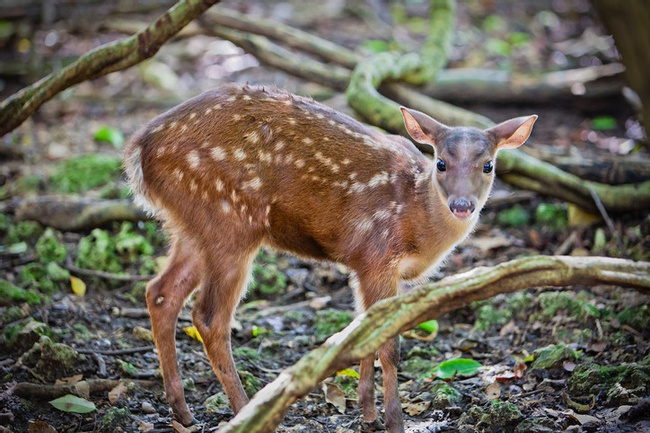Red Brocket Deer
Red brocket deer (Mazama americana) are the largest of the brocket deer. These shy and elusive deer have a widespread range that extends from southern Mexico to northern Argentina.

More about The Red Brocket Deer
Habitat
Red brocket deer live in tropical forests with thick vegetation. They usually can be found near streams and swamps and prefer dry or moist habitat.
Their range includes neotropical regions ranging from southern Mexico to northern Argentina. They can be found at elevations between sea level and 1650 feet (500 m).
Physical Description
Red brockets are the largest of the brocket deer. Their head and neck are a light grayish-brown, while their tail, inner ear, throat, and inner thigh are white. The rest of their body is reddish brown. Males are larger than females and have short, sharp antlers.
Interesting Biology
Their small size helps them move easily through vegetation and water. The animals are very elusive and avoid predators by freezing (standing in place if the danger is not immediate) and leaping through vegetation or swimming across bodies of water. Their reddish-brown fur also serves as camouflage.
The deer are very shy and are usually seen in pairs or alone. Most live between 7 and 12 years.
Females under 4 years old can birth two offspring, whereas older females can only produce one. Females reach sexual maturity around 11 months and males reach sexual maturity around 12 months. The animals breed throughout the year.
Red brocket deer are essential within the Amazonian ecosystem—their grazing creates habitat and also disperses seeds.
Diet
The diet of red brockets primarily consists of fruit and leaves. When less food is available during the wet season, they may eat fungi.
At nighttime, red brockets forage in agricultural fields, on the edge of forests, or in gardens.
Height/Weight
From their head to tail, these deer measure 44–63 inches (111–160 cm). Their shoulder height measures 25–31 inches (65–80 cm). They weigh 44–121 pounds (20–55 kg).
Brief Taxonomy
Order: Cetartiodactyla.
Family: Cervidae.
Sources
Eisenberg, J.F. and Redford, K.H. (2000) Mammals of the Neotropics: Ecuador, Bolivia and Brazil. University of Chicago Press, Chicago.
Geist, V. (1999) Deer of the World: Their Evolution, Behaviour, and Ecology. Swan Hill Press, Shrewsbury, England.
Nowak, R.M. (1999) Walker’s Mammals of the World. The John Hopkins University Press, Baltimore and London.
Similar Profiles
We believe travel is more than ticking destinations off a list – it’s about discovering new places deeply, feeling connected wherever you go, and knowing you have a trusted team behind you every step of the way.



